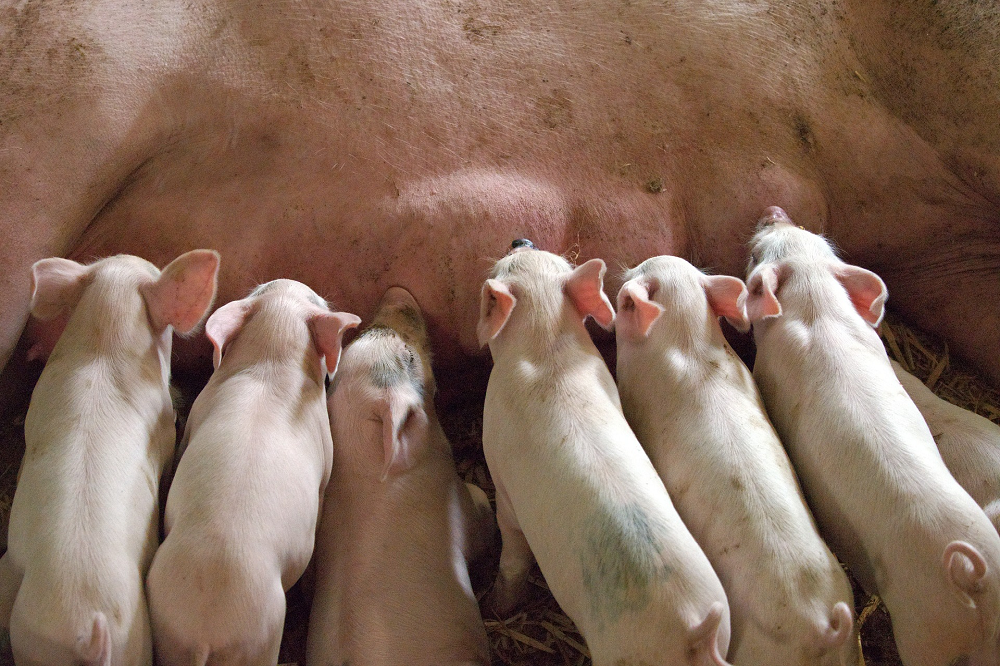How to prevent bacterial infections and reduce the need for antibiotics? Researchers of Wageningen University & Research, universities in Denmark and the United States are joining forces in a new project: PIG-PARADIGM. The Novo Nordisk Foundation is financing the project with 20.1 million euros.
Third leading cause of death
Global use of antibiotics is increasing, which is a leading cause of antimicrobial resistance (AMR). The WHO predicts that antimicrobial resistance will become the third leading cause of death worldwide in 30 years. Pig production is a major global consumer of antibiotics.
In this new project, extensive data – collected by studying pigs – is analyzed in detail by the researchers in Wageningen, Denmark – Aarhus University, University of Copenhagen and Aalborg University – and the University of California, Davis, in the United States. The collaboration across institutions and borders brings together the necessary expertise, technologies and animal studies to find new solutions to this problem.
Pig intestine research
Like humans, pigs develop a complex gut microbiome shortly after birth. Many piglets only get diarrhea at weaning. This is when they are separated from the sow and adjust to a new environment and diet. Piglets are then susceptible to intestinal infections. Antibiotics are needed to prevent disease transmission and the suffering and death of piglets.
“In PIG-PARADIGM we gather knowledge about how we increase the natural defenses and immunity of the pig gut. If this improves, it reduces diarrheal diseases and therefore the need for antibiotics,” said coordinator, Charlotte Lauridsen, professor and head of the Department of Animal Sciences at Aarhus University.
Background information
Antibiotics are used to treat or prevent certain types of bacterial infections, for example in the respiratory or digestive tract of humans and pigs. The current overuse of antibiotics leads to bacteria developing resistance and thereby causing a lack of antibiotic effectiveness. In the worst cases, that leads to the possibility of treating bacterial infections. Currently, more than 700,000 people die each year from infections resistant to most or all antibiotics and the number is increasing. New approaches to prevent common infections could help reduce the need for antibiotics and reduce the spread of antibiotic resistance.
Development of immunity
Antibiotics are designed to kill or reduce the growth of the bacteria that make pigs sick, but they can also eliminate the natural gut microbiome, which is important for developing immunity at a young age. In PIG-PARADIGM, the researchers will investigate how parts of the gut microbiome, including bacteria, fungi, archaea and viruses, interact and whether changes in food composition or the environment affect the gut microbiome. This so that fewer antibiotics are needed and antimicrobial resistance is avoided.
Different expertise combined
In PIG-PARADIGM, Hauke Smidt, Personal Chair at the Laboratory of Microbiology and Scientific Director of the UNLOCK Research Infrastructure at WUR, joins forces with researchers from Host-Microbe Interactomics, Systems and Synthetic Biology and Wageningen Livestock Research.
Smidt: “This exciting project with its unique combination of expertise opens up entirely new perspectives for us to decipher the interactions of the developing pig, its diet and its gut microbiome and to transform that knowledge into healthier pigs.”
About the PIG-PARADIGM project
- Het project heet Preventing Infection in the Gut of developing Piglets – and thus Antimicrobial Resistance – by disent Angling the interface of DIet, the host and the Gastrointestinal Microbiome (PIG-PARADIGM).
- The duration of the project is five years: from 2022 to 2027.
- The Novo Nordisk Foundation makes the research possible with a grant of DKK 150 million.
- The five main parties in the project are; Wageningen University & Research, Aarhus University, the University of Copenhagen and Aalborg University in Denmark and the University of California, Davis in the United States.
Bron: WUR
<!–
–>
–


